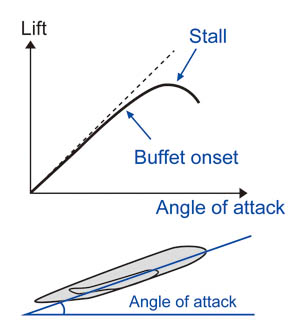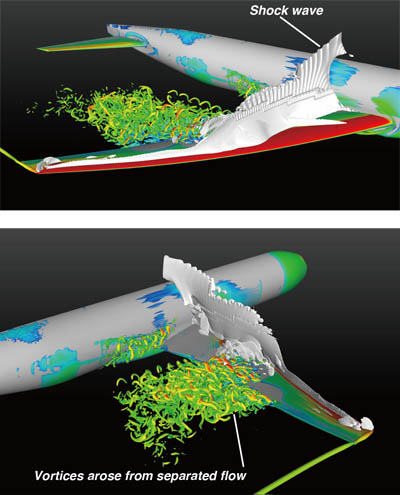Transonic Buffet of Airplane
Unsteady Analysis of High Attack Angle Separated Flow
These simulation results visualize a flow around an aircraft flying at high angle of attack. The shock wave that appears above the wing during high-speed flight and the separated flow behind the shock wave are visualized. We found the shock wave oscillation (transonic buffet) and the fluctuation of separated flow behind the shock wave.
The transonic buffet (aircraft vibration phenomenon due to the shock wave oscillation) occur with increasing the angle of attack. Although there are two kinds of buffet, “low speed buffet” and “high speed buffet,” this is the high-speed buffet. The flow is separated behind the shock wave when an aircraft increases the angle of attack at high speeds. Then the shock wave starts to oscillate and the loading on the wing change in time, leading to the aircraft vibration.
By increasing the attack angle more, the aircraft is stalled and possible to crush.

Usually, aircrafts do not fly at such a high angle of attack. But, we have to know the limit of angle of attack (the boundary of flight envelope) in advance when we develop aircrafts. Numerical Simulation Research Unit (NSRU) does research on the prediction of full flight envelope and its boundaries.

Q criteria and shock wave (color: Mach number)
Unsteady Analysis of High Attack Angle Separated Flow
More information about FaSTAR


